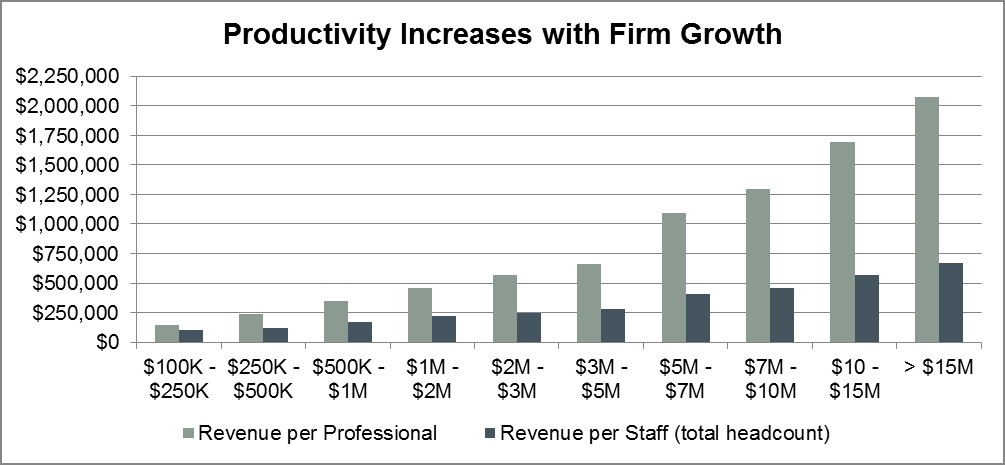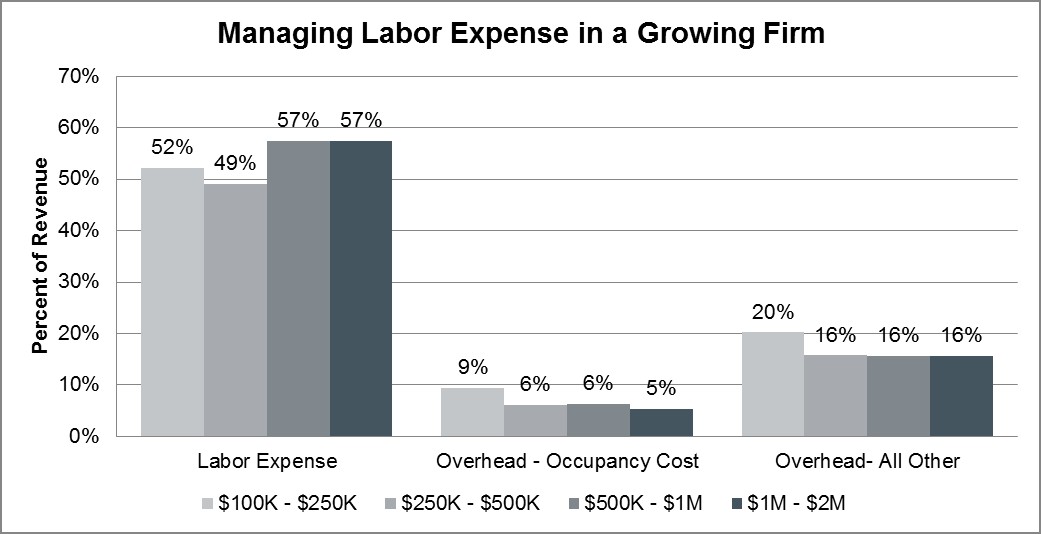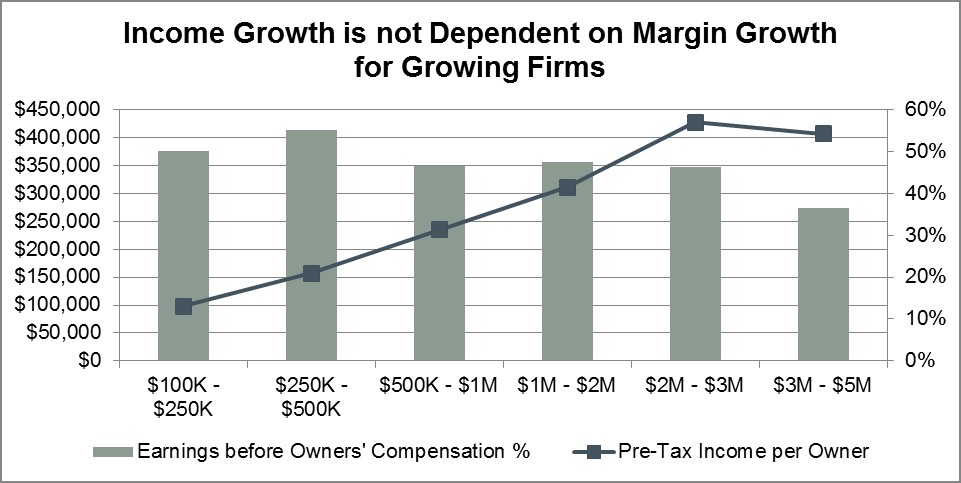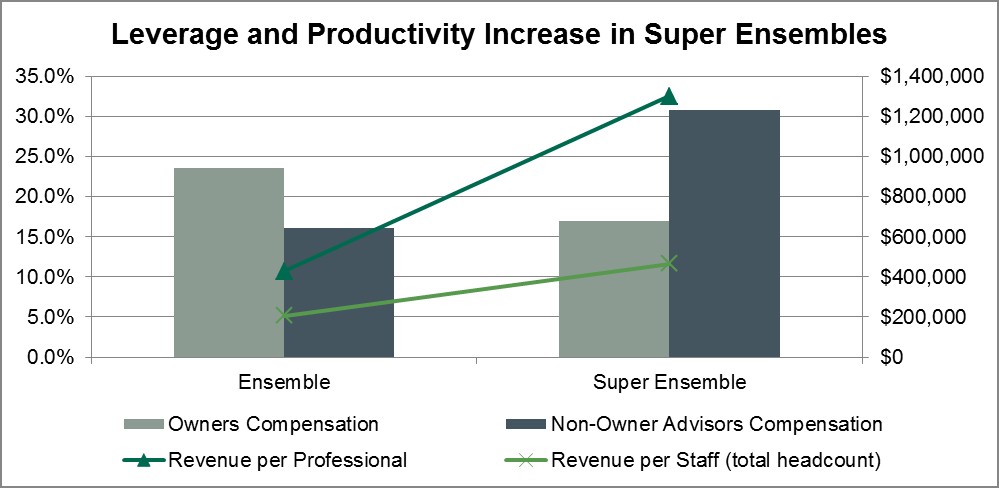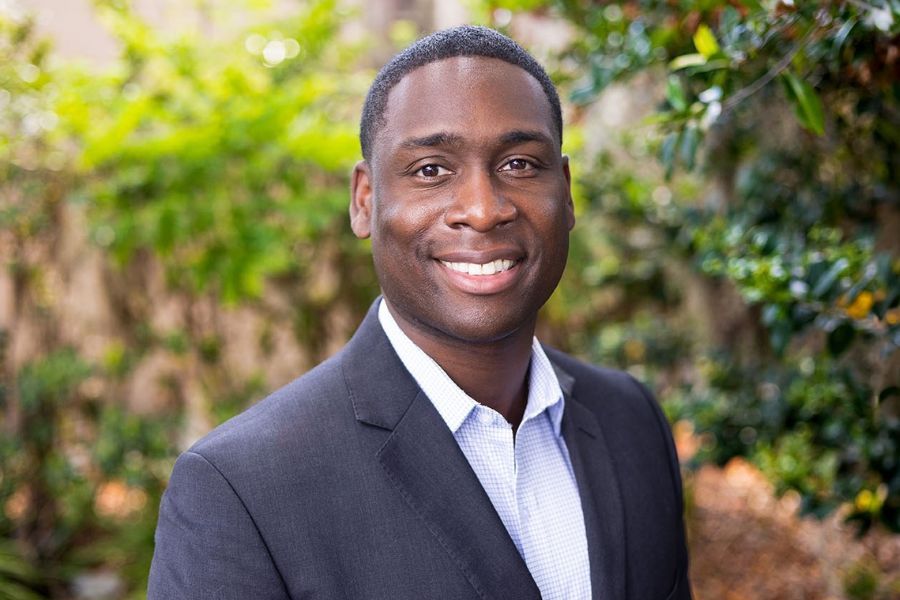What happens to firms as they grow?
Firms progress through the stages of growth much like humans gaining the freedom of mobility.
The landscape of the advisory industry is settled with more large firms that ever before. Over the last ten years, the industry has developed from a majority of solo practitioners to a range of firms with multiple partners and multimillion-dollar average revenue. The spectrum of firm growth expands from single professional shops through large, sophisticated businesses. Along the way, obvious changes are made to the structure of the firm, but subtly, the planning, processes and attention are necessarily impacted.
So what specifically happens within firms as they grow in this spectrum? Larger firms demonstrate better productivity per adviser and staff, higher pretax income per owner and larger client relationships, but these are the results and the motivation to grow. The changes within the firm occur in the quality of staff, mentoring and development, organizational design, service and marketing. The core drivers of these changes root in the key tenets of leverage, career development, management and discipline. Holding to these concepts the successful firms drive productivity and condition a scalable business that increases productivity as it grows.
Investing in the firm has long-term benefits of creating leverage and sustainable value in the organization. As the firm grows, the need to invest in management and people changes the appearance of the firm structurally and in the income statement. These changes are commensurate to the firm’s maturation. Like a human gaining the freedom of mobility, the firm must first learn to run, then it can bike and, and finally it can learn to drive.
Run.
The firm of a solo practitioner has a head count of two to three people and all business development is driven by the owner. All staff members are required to be masters of their domain. The focus of each member is to perform the necessary tasks to process new clients and service existing clients. By nature of the intimate arrangement, everyone is a manager of their own processes and operations are lean.
The objective of an early stage firm or solo practice is to maximize the value of the owner’s time. Capacity concerns grow as more clients are added and the owner has to decide whether to keep growing or shift focus from business development to full client service. At this point, compensation expenses are relatively low because the administrative and support positions are not as technically demanding as required in larger firms; however, compensation will comprise a large part of the expenses, followed by occupancy costs and the usual run of business expenses.
Once the capacity of the owner is maximized, the firm is at a full run. Not unlike attacking a marathon with an all-out sprint, the speed at which the firm can advance peaks and as the run gets longer, the pace actually slows. During this run, owners opting to embrace further growth often seek a partner. After combining two practices, the new joint firm seeks to expand into any excess capacity there may be between the two advisers and share in some of the overhead. The most common arrangement of the two partners initially looks as though the advisers are each running it. Meaning, both professionals are generating revenue, both are responsible for a cut of expenses and neither is gaining a leveraged advantage from the joint firm. This is often termed a silo practice because of the independent responsibilities of each partner. Bringing their forces together, the partners can create a bit of momentum for each other and break from a run into the more efficient and faster cycling.
Cycle.
Seasoned cyclists understand the power of riding in a group. The lead rider of the group works hard and creates a drafting stream for the other cyclists to follow in. When the lead cyclist tires, another rider can take on the needed work at the front and let the former leader draft behind. This is the concept of the next tranche of firms. These firms often range in revenue from $500,000 to $2 million for two partners and range higher with each subsequent partner.
The primary difference between a firm that is cycling versus running is the reliance of the partners on each other. Cycling partners have committed to the value of the firm and treat all clients as firm clients; whereas, a silo firm (a running firm) has ‘yours’ and ‘mine’ client distinctions. Initially with two partners, the firm is not leveraging staff to expand their capacity because often the firm is slightly too small to take on high-compensation professional positions. Once the firm grows, or with a subsequent partner, the economics begin to warrant an employee adviser and the firm can develop leverage.
While the firm’s professional staff is comprised only of practicing partners, the income statement gets heavier with administrative and support staff expense, but begins to lighten on occupancy costs. The reduction in occupancy cost as a percentage of revenue is the only economy of scale the firm will ever see. Advisory firms experience limited overhead reduction with larger size. Where growth produces the largest benefit is in labor productivity and mass. Who wouldn’t take 5% of $10 million over 5% of $100,000?
Of course, as the firm increases in size, more partners are admitted and the proportion of income available to each partner is diluted, but that comes with other benefits. Partners in larger firms have increased options to advise, manage and someday exit the practice with liquidity. Even though share ownership is lower than in a smaller firm, the chart demonstrates that the intangible benefits come without cost to the partner’s income potential.
Drive.
Although the shared experience of the cycling approach improves firm growth, it is fully reliant on the partners to stay involved in revenue generation and client servicing to keep the group together. At a point of financial stability, an entity is born out of individual practices and becomes a vehicle of itself. The firm may have employee advisers, dedicated managers, processes and services that are independent of the partner’s efforts. Like any vehicle, the firm needs a conductor to steer the course, but the day-to-day sustainability is less dependent on the partners to generate and service revenue.
The largest firms in the industry leverage the firm more than any other category. Expenses paid as compensation to the professionals in the firm greatly shift from owner-dominant to an employee-dominant structure.
Not only do the best firms leverage the non-owner talent, they excel in productivity, which demonstrates that employee advisers are capable of being as productive as owners. As the firm grows, the proportion of direct expenses begins to grow, while at the same time, overhead contracts slightly. On balance, total expenses do not change materially as a firm grows, but as a percentage of revenue, the largest expenses tilt away from operations in favor of professional labor.
Regardless of the stage and vehicle, growth comes with new challenges and skills to develop. For the practicing partner, management responsibilities increasingly nibble at more of the time formerly spent generating revenue. The growing firm needs direction and leadership. Management skill becomes an important competency for the firm that wasn’t necessary before. Ignoring the need to plan and guide the firm’s growth results in revenue limitations and bloated expenses. Successful firms recognize the importance of proper management and commit to maximizing the attainable benefits from an advisory firm’s largest expense, its people.
Prosperity and high income drive many practices to grow, but personal productive growth is only indirectly helpful to firm growth. As firm’s become larger, those that treat themselves as businesses have controlled expenses, high productivity, leverage and leadership. The expenses on the income statement demonstrate intelligent growth and signal a sustainable business that can drive from a dependent practice.
Brandon Odell is director of business consulting with The Ensemble Practice LLC. Philip Palaveev is the owner and chief executive of The Ensemble Practice LLC, a business management consulting firm that defines the evolution of growing a multiprofessional advisory practice. The Ensemble Practice is a strategic partner to InvestmentNews Research and the 2013 IN/Moss Adams Adviser Compensation & Staffing Study.
Learn more about reprints and licensing for this article.

